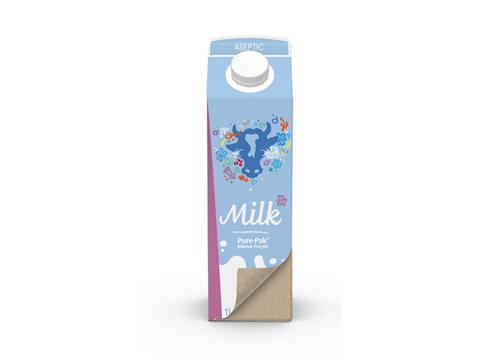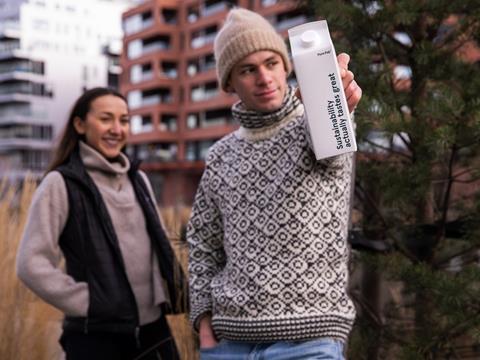
In our latest Spotlight, Elopak introduces its Pure-Pak® eSense carton, an aseptic carton made without an aluminium layer.
For food in the aseptic market, Elopak cartons offer several distinct sustainability advantages over plastic bottles and other packaging formats. Chiefly they benefit from being mostly made from paperboard, which, when sustainably sourced, is a naturally renewable resource. Pure-Pak® cartons also have a lower carbon footprint than plastic bottles and are fully recyclable where proper collection and recycling systems are in place.
However, traditionally the use of aluminium in aseptic cartons has resulted in a higher carbon footprint than their fresh counterparts, due to the energy-intensive processes needed to extract and refine the metal. Aluminium is also a finite resource, which does not replenish over time – unlike paper.
At Elopak, we have invested to deliver a solution that ensures the packaging of aseptic products can be as sustainable as possible for those in the fresh segment. The result is the Pure-Pak® eSense carton: a more environmentally friendly aseptic carton made without an aluminium layer.
Using technology from our fresh portfolio, we replaced the aluminium in the Pure-Pak® eSense carton with a polyolefin blend barrier. This results in a carton with an up to 50% lower carbon footprint[1] compared to a standard aseptic carton, while still maintaining full recyclability.
Without an aluminium layer, the Pure-Pak® eSense carton unlocks the potential to be fully renewable. It is also better optimized for recycling since there is one less layer to remove in the recycling process.
This falls in line with Elopak’s ambitions to promote a net-zero circular economy for packaging: driving the transition from plastic bottles to fully renewable, low carbon cartons. It also makes sense for our aseptic customers, many of whom produce environmentally friendly products and want a packaging option that supports their ethos.

The Pure-Pak® eSense carton is available in a range of sizes and with various environmental features, including the option for a closure and coating made from polyethene based on feedstocks from second-generation renewable resources. As with all Elopak cartons, it’s also available in a carbon-neutral version, whereby the carton’s remaining emissions are offset through Elopak’s verified CarbonNeutral packaging program.
Although no longer containing an aluminium layer, the Pure-Pak® eSense carton remains as rigid and convenient as a conventional aseptic carton, ensuring that the product inside stays fresh. It also has easy-folding crease lines, which are designed to help consumers empty all the product inside before folding the carton for more convenient recycling, as well as reducing food waste.
Nowadays, consumers are always looking for ways to reduce their environmental footprint – without having to compromise on quality. By rolling out the Pure-Pak® eSense carton, Elopak offers its customers more sustainable packaging for a wider range of products, while still playing a vital role in protecting food and minimising waste.
[1]When combined with 2nd generation renewable polymers based on second generation/waste-based feedstock. Based on internal, third-party reviewed cradle-to-gate calculations from the Dynamic Elopak Environmental Performance (DEEP) tool, version11, 2021.
This content was sponsored by Elopak.











No comments yet